Mirar esta página en español HomeJournal ContentsIssue Contents
Volume 12 Number 1
©The Author(s) 2010
The Canada Goose Project: A First Project with Children under 3
Abstract
This project report describes how five children (an infant, three toddlers, and a preschooler) enrolled at a private day care home engaged in their first journey into project work through a study of Canada geese living on a nearby body of water. Prior to the experience described in this paper, the author had used the Project Approach only with children over age 3. The author has been caring for children for 20 years, the last several years using the Project Approach as defined by Lilian Katz, Sylvia Chard, and Judy Harris Helm. The author’s curriculum is also inspired by the approach to early childhood education and care in the preprimary schools of Reggio Emilia, Italy, which she has studied extensively. Through her reflective journal, videos, and samples of the children’s work, the author describes how the children responded to a number of provocations to think more deeply about and make representations of the things they observed during their project.
Background Information
I have been caring for children for 20 years, the last several years using the Project Approach as defined by Lilian Katz, Sylvia Chard, and Judy Harris Helm. The program in The Children’s Garden, my private day care home, is inspired by the preprimary schools of Reggio Emilia, Italy, which I have studied extensively. The satisfaction level has been remarkable for both me and the children, and the learning that occurs while engaged in the investigation of a project topic is profound. The Canada Goose Project represents my first attempt at engaging children under age 3 in project work. In addition to 5-year-old Marissa, the participants in this group were 13-month-old Lily, 30-month-old Alex, and 34-month-old twins Christien and Colten.
Preliminary Planning and Selection of the Project
Our group had been visiting the Canada geese at Hoover Dam, a small community park in Westerville, Ohio, for as long as we had been together—which meant that the children in the group, most of whom were now near 3 years old, had been visiting with the geese since before they could walk. The park—with its marina and playground—is about a 5-minute drive from my home. In the spring, thousands of geese descend on the wetland areas in central Ohio. Hundreds of those make their summer homes on Hoover Dam Reservoir. In late winter/early spring, we would begin to look for them, and the children and I would be thrilled in late March as the first geese returned. On Wednesdays, we would take a picnic breakfast and lots of leftover cereal and have a morning at the dam, walking there, playing on the playground, and feeding our friends the geese. We also watched the geese leave each fall, visiting regularly until every one of them had left for warmer climes.

Figure 1. Among the geese at the park.
One of my main goals for this project was to familiarize the children with the tools of investigation and project work. This group was young; not everyone in the group was verbal yet. Although they could all use basic signs (also known as “baby sign,” a sort of modified American Sign Language) to get needs met, they could not yet communicate their learning in a way that could easily be documented. It seemed to me that they needed some additional “languages”—the ways to represent learning described by Loris Malaguzzi in his poem “The Hundred Languages of Children.” The task ahead seemed daunting: how would I engage toddlers in project work and investigation?
Excerpt from Field Journal
04/01: When I took some time to consider all of the varied interests of this particular group of children, I realized something very simple. The best way I can help facilitate project work with this group is to give them the tools with which to do projects! They have always had things to express themselves with…as many “languages” as I could provide for them. I teach by playing with them in whatever media they are using. The thing is—they have been using the tools (clay, paint, crayons, blocks, etc.) for as long as they could get their hands on them. I haven’t ever pushed them to do representation. I am talking about the 30- and 34-month-olds, of course….
Phase 1: Beginning the Canada Goose Project
To develop a topic web with the group, I began with conversations that occurred naturally during our forays to the dam. The children were always interested in any information that I had about the geese. “Why do they come here? How do they fly so long?” When the children began to ask to increase our number of visits to the dam each week, I wondered about studying the geese, based on my observations concerning the interests and questions of the children.
It was a challenge to develop a web without the direct commentary of the participants. Marissa, the 5-year-old, had worked with project topics before and was able to be an expert in the development of a web. 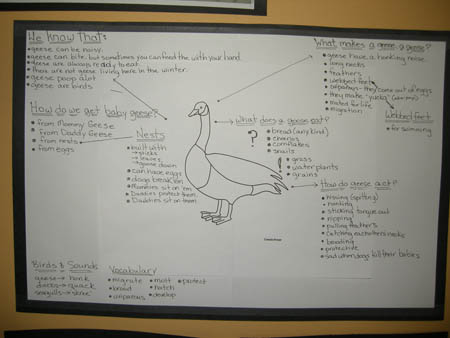
Figure 2. Topic web for Canada goose project.
The question arose for me: How could the learning of these very young children be represented, and in what ways, during project work? I felt called upon as an early childhood facilitator not only to care for the children’s day-to-day needs but also to empower them to represent their knowledge and ideas in ways that were tangible and could be assessed. The project, I felt, must give the children an opportunity to investigate naturally. Therefore, the process had to be developmentally appropriate and to stem from the interests of the child, but it had to provide evidence of learning as well. So the children and I began the dance that is project work: interests appear, provocations are offered, and investigation takes hold.
My offering of representational media was intentional during the Canada Goose Project. I offered many media over the weeks during which we investigated the geese, scaffolding the children’s work in each medium, and offering ideas, but frequently reminding myself to allow the children to progress naturally rather than tell them to make something that “looks like” a snake or a goose.
Excerpt from Field Journal
04/07: When we paint, I prepare a palette for each child. It is a simple paper plate, but we go together to the shelf where the paint is kept, and the child chooses which colors he wants to paint with. Alex always mixes the colors in the palette. Of the three boys, Alex is the one who always mixes first. The other two mix as well, sometimes, but not always. I give them one paintbrush apiece and encourage them to rinse and wipe the brush between colors. I encourage, not force. I want the boys to move into representation, but I don’t want to disrupt whatever it is they so enjoy about mixing the paint. Alex especially really likes to watch the whole mess come together. I plan to also offer the boys a palette with one color on it (black?)…then I won’t go through the normal “What colors do you want to use today?” I have a philosophy of offering one paintbrush because as an adult who enjoys painting (no, I am not good, or an artist) I was taught to use one brush unless I want to change the size of the line I get from the stroke. I want to encourage the same thing in the children. It doesn’t seem natural to me to have a brush for each color of paint. They generally get mixed anyway, and then you have ten little pots of mixed colors of paint. I am intentional in the way I try to scaffold the use of paint and brush. I also know from experience that (1) children enjoy having their own personal pallet and (2) eventually they do start rinsing and stop mixing up the colors unless they are intentionally blending.
Phase 2: Investigating the Canada Geese
Field Work: Visiting the Geese at Hoover Dam
The weekly breakfast picnic was a routine for us. We always took our “discovery bag.” Usually the bag is loaded with card stock, pens/pencils, magnifying glasses, specimen containers (in case we find something we need to observe for a week), and binoculars. We would dress warmly and load up in the MOO, which is our big white van.
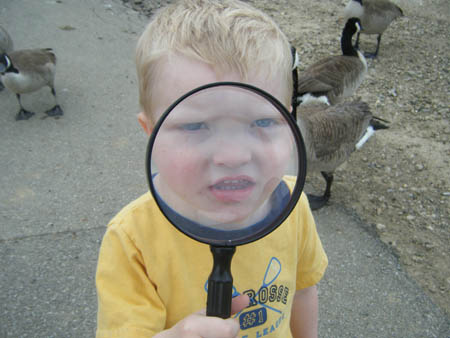
Figure 3. Using a magnifier at the park.
Excerpt from Field Journal
04/08: …What does fieldwork look like with a group of toddlers? It is all about sensory experience. I believe that the noise and the wind and the sunlight dappling off the water are what draws the little ones to this place. I know it has drawn me since I was a child. For Lily, goose day is a delight for the senses: the wind on her face as it comes off the water, the sounds of the birds, the sunlight that she looks up at through squinted eyes. She enjoys the noises that the geese, gulls, and ducks make. I listen to her as she kind of honks like a goose. She found it much more fun to scream like the gulls. She smiles in delight at the gulls flying overhead and the cacophony of the geese clamoring around the picnic table. Infancy is such a wondrous time. She holds bread in her fists and eats it herself, not offering the geese any at all but enjoying their company.
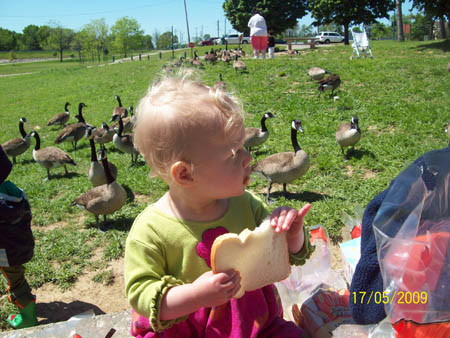
Figure 4. Lily not feeding the geese.
Representations: Making Casts
During a conversation with Marissa (age 5), I mentioned that it would be interesting to take plaster casts of the footprints that the geese made in the mud at the dam. She agreed that it would be “neat” to do that. Before we made casts in the field, we set up a sand and seashell casting experience in the sensory table. Since we had no experience with taking casts, I created a small sandbox and set out some seashells that a friend brought from Florida. We pushed the shells and our fingers and hands into the sand to see the impressions we made. The twins, Colten and Christien, were also able to take part in this experience. After some time just playing in the sand, we made some casts.
Excerpt from Field Journal
04/14: This is a good sensory experience for Alex. The sand is wet, which he usually does not get into. He is a little anxious that the sand sticks to his hands, but we figure out that it wipes off, and things are better. Only one of the children chooses to use his hands to create the impression for his cast. This is Colten. The other children make designs in the sand with their shells. Now we wait…. Saturday: Christien brushes the sand off of his cast. He is excited! “Oh, it’s BEAUTIFUL!” he exclaims. He matches the shells that he used to the cast he has made.
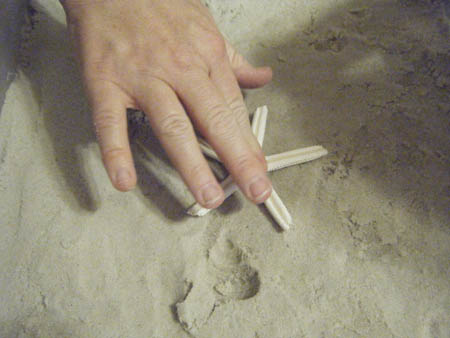
Figure 5. Making casts with seashells and starfish.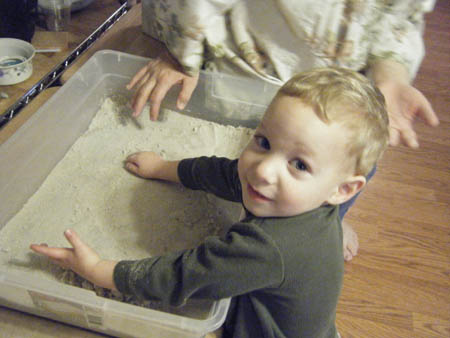
Figure 6. Encountering wet sand.
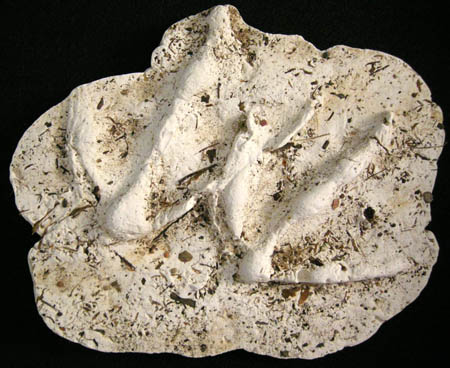
Figure 7. Goose-footprint casts from field site visit.
Other Representational Experiences: Sketches, Drawings, and Maps
During the Canada Goose Project, the children progressed with their individual methods of representation. Although the group was quite young, and representation was what is typically seen in the preschool years, it became evident to me that the children represented their learning in their own ways.
As the project progressed, Alex became more intentional about his sketching and even began to understand that when he added his name to the work, the work became more important. “This is my name,” he stated proudly as he put his A on the side of his drawings.
Excerpt from Field Journal
04/28: Alex is a surprise. He does not draw anything that anyone could decipher, but he does (1) look intentionally at the geese and then make marks on the paper, (2) seem to be directly imitating the work of the child next to him (not the drawing, but the method), and (3) decide after imitating for a while to pay attention to his own technique and begin to make small intentional marks on his paper. Development of his intentionality is exciting to see.

Figure 8. Drawing of goose by Alex, age 30 months.
While he had never been a particularly vocal child, Alex could be very verbal when another child damaged his work.
Excerpt from Field Journal
05/12: As I am working, I hear a “Lily NO!!” and then a wail. Alex comes to the gate yelling, “Lily broke my work, Lily tear-ed it, Lily TEAR-ED it!” Lily has indeed taken Alex’s first drawing off of the documentation wall and has torn the corner in the process. In pulling it away from her, Alex has bent the corner pretty badly. He is absolutely overwrought!
His reaction seemed to show his feeling of investment in his work.
At one point, Marissa decided to abandon the cartoonish geese with the long eyelashes and jeweled crowns she began the project with in favor of observational drawings that clearly represented the specific markings and body style of the Canada goose.
Colten carried on his investigations very physically, moving his body in ways that suggested deep attention to such things as the sound of rushing water at the top of the dam or how the geese moved their feet. He waddled in imitation of the geese walking on the bank and then watched intently when they swam. He did not try representation with any media other than his body. The way that he moved, the caution with which he stepped, was in itself a kind of language of understanding, a dialogue between what he perceived to be happening and how he could make his body represent what he understood.
Christien could become so intensely involved in an investigation that he would prefer to skip a meal rather than be interrupted. He also would not become involved in something unless it was his idea. No amount of prompting would bring him to an activity unless he wanted to participate—which was acceptable to me. I believe it is important to gauge a child’s interests and development and allow him to interact with his world in order to construct his own understanding. It seemed to me that for Christien learning followed a spiral: he wanted to know; he investigated with whatever he had at hand, working until he felt he had assimilated it entirely; and then he moved on. Because he had enjoyed the area at the dam for so long, it made sense that he would know quite a bit about it, but what he knew amazed me when he finally represented his understanding in a drawing, as the following field notes and video demonstrate.
Excerpt from Field Journal
05/18 …I have brought paper for sketching, a new tool for looking called a “pond-scope,” and the field glasses and magnifiers. While we feed the geese, I offer the sketching paper and pens. Alex and Christien want to draw. Alex draws for a minute but then is off. Christien draws for quite a while. He adds many details to his drawing. I observe him as he draws and talk to him about his work. His work is very quick. Marks are made with great speed. View the video of Christien at work.
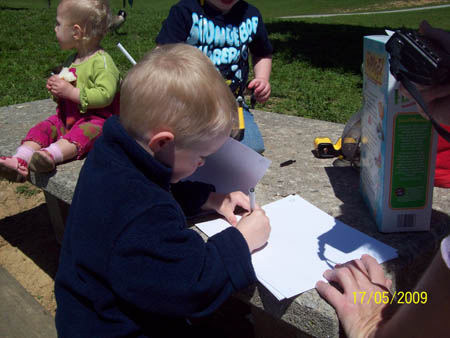
Figure 9. Christien (age 34 months) drawing his map.
Excerpt from Field Journal
05/18. When I review the video of Christien’s drawing later, I have my socks knocked off. As I watch every detail of his work, I realize that he has drawn an accurate topographical map of the area. He has drawn the water’s edge, the parking lot bordered by rocks, the geese all around, and the area where we sit and feed the geese. He has added some eggs, although they would have been more properly on the peninsula. Perhaps he has put them there because he has not left enough room for the peninsula on his paper. I don’t know, and I will not have another opportunity to visit with the twins for several weeks. Time is of the essence for learning, so I may never know, but I do recognize a map when I see one. I surmise that the reason he was drawing so quickly was that he had ideas he wanted to get represented. This was his second drawing. On the first, he had drawn a wide arc on the side of his paper. The arc ran off the edge of the paper, and Christien seemed to be dissatisfied with this. He discarded that drawing and started again. I did not save it either. I do have the finished drawing, and I am amazed. I tell him he had better be an engineer when he grows up, but he has told his mommy that he is going to be a Spiderman doctor.

Figure 10. Christien’s map of the dam area.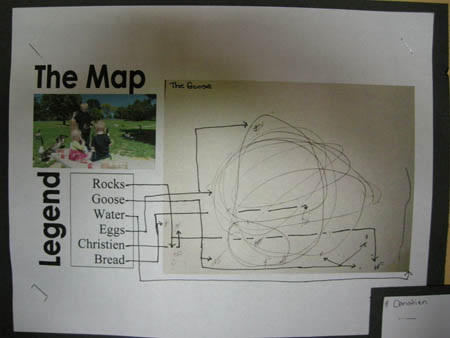
Figure 11. Christien’s map with key, from culminating display.
Fieldwork: Learning about Embryonic Development
Several of the children had experience with hatching chicks with me two springs earlier. I explained to them that we could not safely observe a goose egg as the gosling developed. After some discussion and review of photos from hatchings past, the children and I decided to set up the incubator with fertile eggs obtained from a local egg farm. These eggs were set to hatch in 21 days. I anticipated that the children would be able to easily touch, turn, and candle the eggs as the chicks inside developed.
Excerpt from Field Journal
04/14: Marissa remembers hatching chicks before. She is very excited to see the incubator again. She remembers how the little chicks seemed to take so long and work so hard to get out of their shells. “They were just breathin’ and breathin’.”
04/22: Today is exciting for us. During the weekend, the twins and I visited the dam. Colten and Christien observed a clutch (nest with eggs in it). We talked about how the Mom and Dad geese take turns caring for the nest and were able to observe a changing of the guard while we were there. Christien decided that the nest then must be called a Mommy/Daddy nest, not a goose nest or a clutch. I tell the children about the Mommy/Daddy nest the boys and I found. Marissa is totally jazzed to see the nest. We do have chicks incubating but that is only for comparison to the goose eggs and so that children can watch a chick developing in a candled egg. (They cannot watch a Canada goose egg develop.)
05/01: We should have chicks soon. I have candled the eggs and saw movement in at least one of them; I believe two at least are viable. I feel comfortable letting the children see the eggs candled again this Monday so they can see how the chick has grown to fill his shell.

Figure 12. Candling a chicken’s egg.
The day after candling the eggs, we talked about the difference in size between the goose eggs and the chicken eggs. The boys helped me empty a chicken egg from the store. Christien was surprised to see that there was no baby chicken in that egg, even though he eats eggs at least once a week, he helps his mom cook, and he has cooked with me, too. “Where’s the baby chicken?” he asked. We talked about store eggs not having babies in them. I explained, “If we want to have baby eggs, we have to get the eggs from a farm. There are not babies in store eggs, they are for eating.”
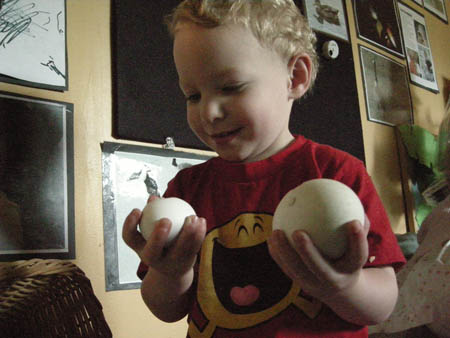
Figure 13. Looking at eggs.
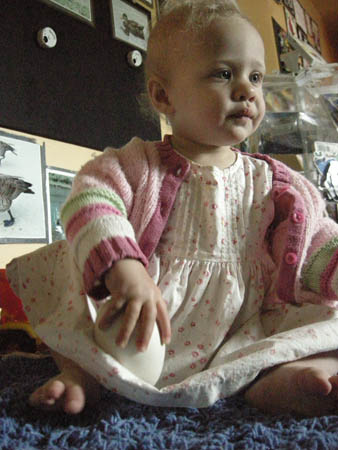
Figure 14. Lily with an egg. Despite a near-tragedy with the incubator when the power turned off while I was away, long enough for the eggs to get cold, some of the eggs ultimately hatched, just as always before when we have incubated chicks.
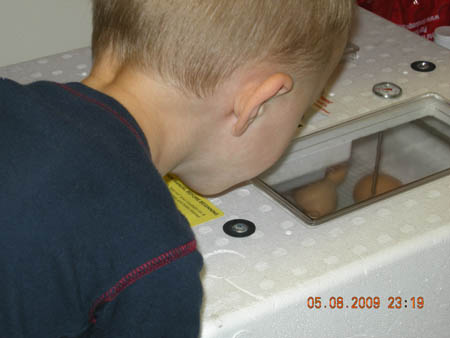
Figure 15. Looking into the incubator.
Excerpt from Field Journal
05/09: CHICKENS!!!...Ahhhhhh (big sigh of relief). I call and email the families and tell them. Colten and Christien come over. Christien and I actually catch a hatching on video. Oh, boy, what a day. Lots of filming. Christien tells me that the chick came out of his egg and that he will fly in the air. Colten says the word “incubator,” finally. Neither of them had attempted that one yet. We feed and water and care for and watch and listen and worry after what were (finally) three baby chickens.
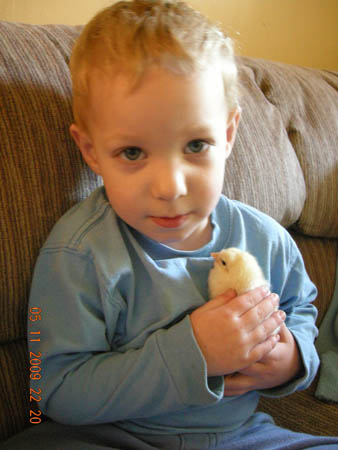
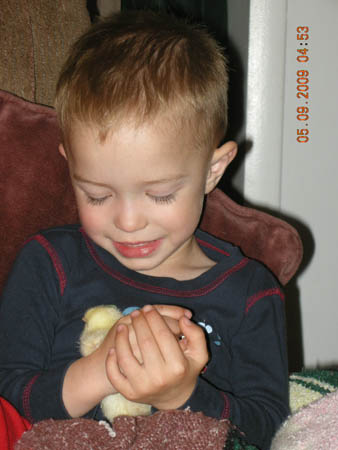 Figures 16-17. Holding the new chicks.
Figures 16-17. Holding the new chicks.
Nest Predation and Destruction on a Site Visit
I have found that when the topic for investigation involves life, it inevitably also involves death. The children and I experienced this fact during the study of the Canada geese.
Excerpt from Field Journal
04/22: …What [Marissa, Alex, and I] find on the little peninsula [today] puts the wind right out of our sails. Two of the three nests we had found on Saturday have fallen victim to predation. We see egg shells and yolk everywhere. The nests were empty when we saw them only days before. Now they have been filled—with eggs laid by the geese—and emptied again by predators. The pair of geese that belong to one of the nests are swimming around the bank near the nest, softly honking at us. Marissa, who can be a bit emotional, is aghast. I think she may become upset and cry, but she is angry. We can see that the predator was a large dog; we have a Saint Bernard and a Mountain Feist, and the footprints we find are closer in size to the Saint Bernard. Marissa picks up the eggshell and says that it is much bigger than a chicken egg…. As we make our way back to the van, Marissa notices that lots of trash has accumulated from a more domesticated species: MAN. She looks up at me and says, “Shouldn’t we just want to clean up the environment?” Alex sings out, “Clean up, Clean up.” Right there, the three of us have a little impromptu cleaning session. We reaffirm what we know about taking care of the earth, without any actual plan to celebrate Earth Day…. 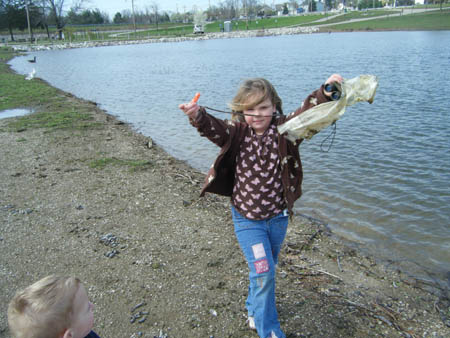
Figure 18. Cleaning up trash.
Two days later, the group encountered cause for celebration when another nest was discovered, full of eggs.
Excerpt from Field Journal
4/24: …We are hot to investigate [the nest]. The twins’ mother, Virginia, is with us. We play on the bank, looking for snail shells for a while, and then we go over to the peninsula to look for nests. Lo and behold, there are several nest sites. One of the nests has a mommy and daddy in attendance, so I know they have a clutch. We get the boys to come look at the nest one at a time…. Virginia moves on to see if there are any more nests. She finds another, and calls out to us…. She gets excited and says, “Look, this nest has already hatched!” I have to then tell her about predation. I show her the dog tracks in the mud and the location of the eggs (about 5 feet away, on the bank) that have “hatched.” I thought Marissa was going to be the one to cry…. Virginia can’t believe that something so horrible could happen. I tell her and the boys that a dog ate the eggs. Colten repeats, “Doggie eats ’em,” so I know he understands what happened. He has some knowledge about what is inside an egg, because we allow children to crack eggs when we cook together. I watch him as he identifies for himself the albumen and the yolk. He picks up the broken shell gingerly and carries it with him for a while.
Whether the dog in question was a pet or one that had been “dumped” was unclear. What was clear, however, was that it had a taste for eggs—an unpleasant reality for both me and the children. While the group was saddened by this turn of events, the project continued, and I believe that deeper learning involving ethics and care of the Earth occurred.
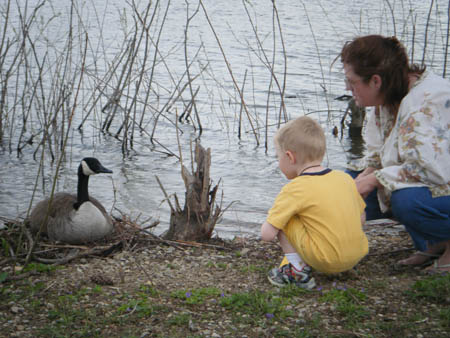
Figure 19. Watching geese on a nest.
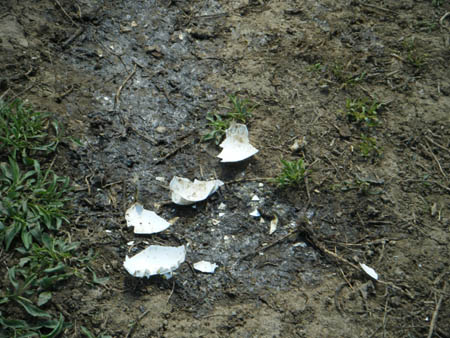
Figure 20. Broken eggs, a sign of nest predation.

Figure 21. Using binoculars to view geese.
During Phase 2, the children and I engaged in several activities in addition to incubating eggs, drawing, making casts, and observing the geese. These activities included trips to the library to get books about the water fowl we observed at the dam, visits to the naturalist at another park to ask questions about the geese, a visit to the zoo, and talking with the marina police to see if we were permitted to post a sign about littering and pets off leash. We came up with many ideas about how to look at our friends the geese.
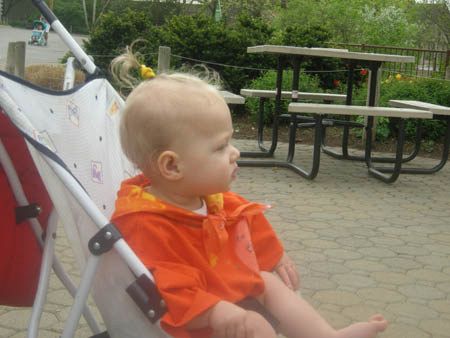
Figure 22. Lily watching ducks on a visit to the zoo.
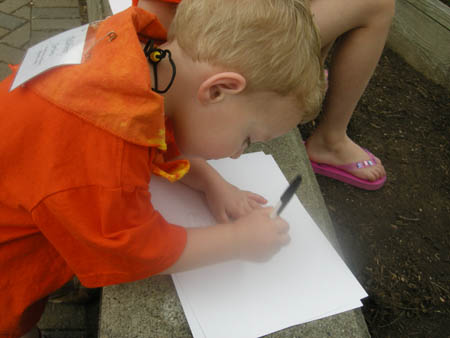
Figure 23. Drawing at the zoo.
Phase 3: Endings and Beginnings
The project could have gone on for much longer, but things began to change in nature. The children began to investigate other aspects of life at the Hoover Reservoir and Dam. Often when we walked the peninsula looking for nests, the children collected snail shells for taking home to look at. Interesting bugs made themselves known, and there were tiny fish near the banks. We brought a pond scope with us, which opened up another aspect of investigation—seeing what was under the water. So much had been learned about the geese, it seemed proper to “put them to bed” before moving on.
Excerpt from Field Journal
05/19: We are preparing to culminate this project! I have offered the pond-scope due to the interest in the snail shells. The chicks have hatched, and our work with the geese seems to be done. It is the way with projects; they often lead us to another direction. That is what I feel happening here. Since our time to do a project for school work is almost over, we cannot move into another area, and still call it the Goose Project. Sometime in the future, it may become the “Life at the Hoover Dam” project. Time will tell. Meanwhile we decide what we will share with our parents, siblings, and friends (who will be our special guests) at our culminating event on the 22nd. We have been so engaged in our work that the need to culminate and go forward arose rather abruptly. Quickly I call all the parents and see if they can come to a special evening event on the 22nd.
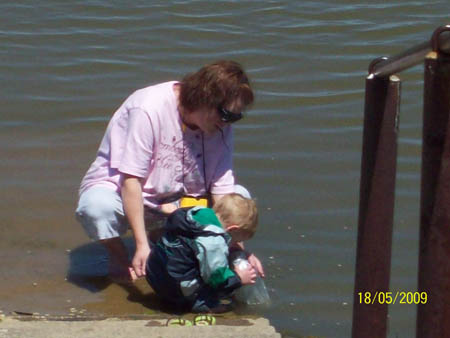
Figure 24. Using the pond scope.
On the morning of our culminating event, I asked Marissa what she would like to share about our panels. She wanted to go over each and every piece! We talked about the panels, the photos, and the artifacts. The video clip shows part of the presentation that Marissa made for our guests.
Then we made a special treat for the guests—nests. The nests were a simple chocolate snack that we had made before. (Sometimes we have used butterscotch pieces and call them “hay stacks,” but for the event, we used chocolate and called them nests.) We added three white Jordan almonds to each nest to represent the goose eggs. Even though we were playing in food, Marissa was clear that she wanted the nests to look “real” and tried to get the sticks just right. Alex started to help us but then decided to play with Lily.
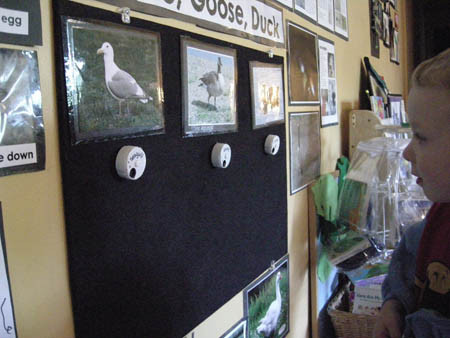
 Figures 25-26. Documentation panels.
Figures 25-26. Documentation panels.
The Teacher Reflects on the Goose Project
I thoroughly enjoyed this project. We often ask children what they liked the best about a project. When I ask myself, I have to say that being with the children was the best part—not just as the teacher but being truly with them on the journey. They are fascinating. I was present when Lily found the confidence to walk into a gaggle of noisily honking geese. I watched Christien work on his sketch one day and found to my amazement that he had made a map of an area that he knows a great deal about. I watched Colten on top of the dam as he tried to discover the reason for such a vast change in sound from one side of the dam to the other (see video: Cacophony Conundrum). I was there when Alex showed a reverence for life that many in this world seem to lack, and I was present when Marissa took on the job of sharing her understanding with a group of folks very much older than herself.
I was not able to realize many of the plans that I had for this project. I knew that two of the children were very interested in an environmentalist’s work, and I wanted to visit a farm for injured Canada geese that were being rehabilitated. We had interviews scheduled with experts who weren’t able to accommodate us, and I had wanted the children to get used to the idea of asking an expert for answers. If not for the fact that this work was being recorded for my own capstone work at university, time would have allowed us to reschedule the activities that had to be canceled. I was very dissatisfied with that for a time but began to accept that even without those fascinating studies, the children learned about the things they were interested in—why water rises and falls, why a goose moves one way on land and another in the water—growing in their ability to construct understanding.
The children have learned something about being a community of learners—that each of them contributes to the whole. Each of them has something to offer the group; even the youngest of us, Lily, gave her impressions and representations to the project. The children also developed as social beings, becoming more comfortable with nature and understanding that, as stewards of this planet, we have obligations to it, such as keeping it clean and being kind to its inhabitants. One of the things that Marissa and Alex were most disturbed about was the amount of garbage that we found on the banks of the reservoir. Most importantly, I believe the children grew in their understanding that we do these things not with the sense that it is something we must do, not drudgery we must deal with, but with a sense of joie de vivre and love for one another and our world.



Author Information
Ruth A. Brewer, AAS, BS, MOM, has been an in-home preschool and child care provider for 22 years. She received her associate's degree at COTC, in central Ohio, her bachelor's at the University of Cincinnati, and will obtain her master's at Ashford University in Illinois (all in early childhood). She is also an independent consultant and trainer of preschool teachers. She a student of the Reggio Emilia and Project Approaches, and her work is represented in the Communications Panel in the Ohio Voices for Learning traveling exhibit "Where Ideas Learnto Fly": http://ohiovoices.org/Exhibit.htm.
Ruth A. Brewer
The Children’s Garden
Westerville, Ohio
Email: mmaber38@hotmail.com

